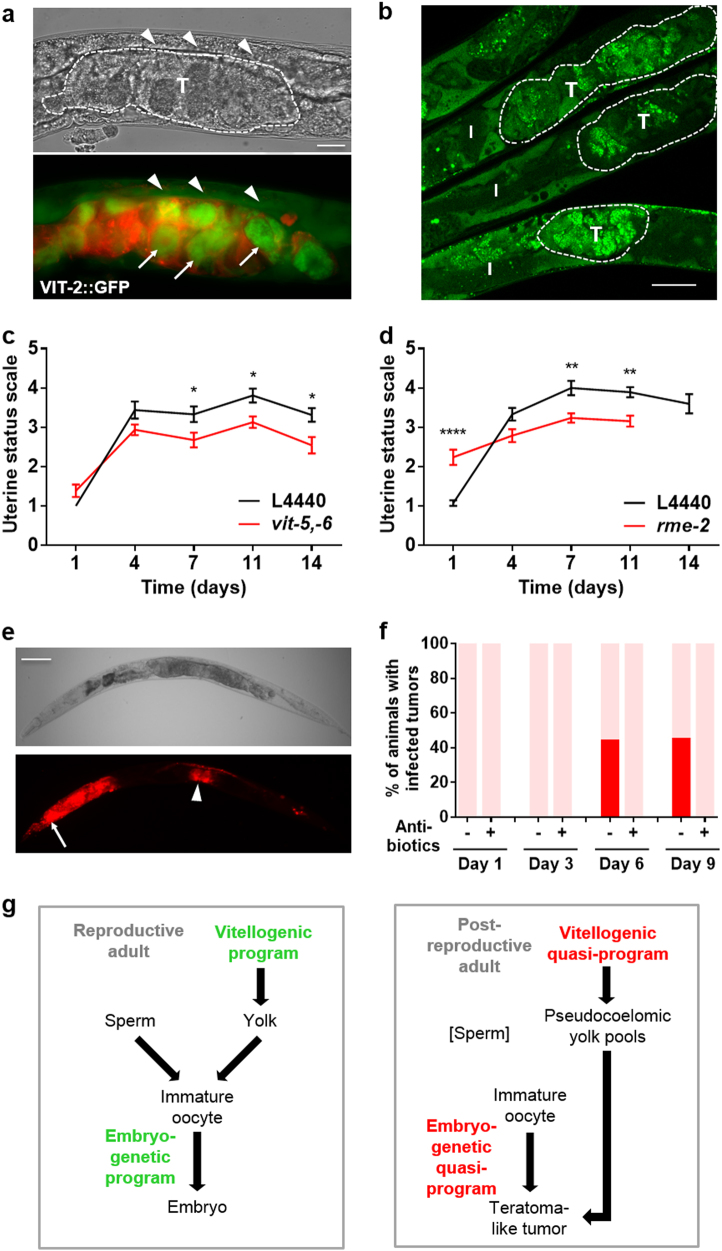Fig. 6.
Additional uterine tumor etiologies: yolk uptake and bacterial infection. a VIT-2::GFP accumulation in uterine tumors (day 10 adult), with cell membranes marked with mCherry::PH. VIT-2::GFP accumulation in oocytes within tumors (arrows) and in yolky pools (arrowheads). T, uterine tumor. Scale bar, 25 μm. b Neutral lipid staining shows lipid accumulation within uterine tumors, delineated by dotted lines (day 8 adult, 15 μM FUDR). I intestine, T uterine tumor. Scale bar, 25 μm. c vit-5,-6 RNAi reduces tumor size (mean ± s.e.m.). Summed data from 3 trials; Sidak multiple comparison test, *p < 0.05. Sample sizes on each day: n = 19–32. d rme-2 RNAi reduces tumor size (mean ± s.e.m.). Summed data from 2 trials. **p < 0.01, ****p < 0.0001. Sample sizes on each day: n = 14–21 (rme-2 RNAi, day 14, n = 5). c, d RNAi initiated at hatching. e, f Uterine tumors can develop bacterial infections. e E. coli expressing dsRed within uterine tumors (day 10 adult, necropsy). Arrow, infected pharynx. Arrowhead, infected tumor. Scale bar, 100 μm. f Bar graph showing frequency of worms with infected tumors, without or with carbenicillin (Fisher Scientific, 4800-94-6). Pink, uninfected; red, infected. g Scheme summarizing how programs that act to promote reproduction in young adults (left) become quasi-programs to promote pathology in older adults, after sperm depletion (right). Arrows indicate a contributory effect

